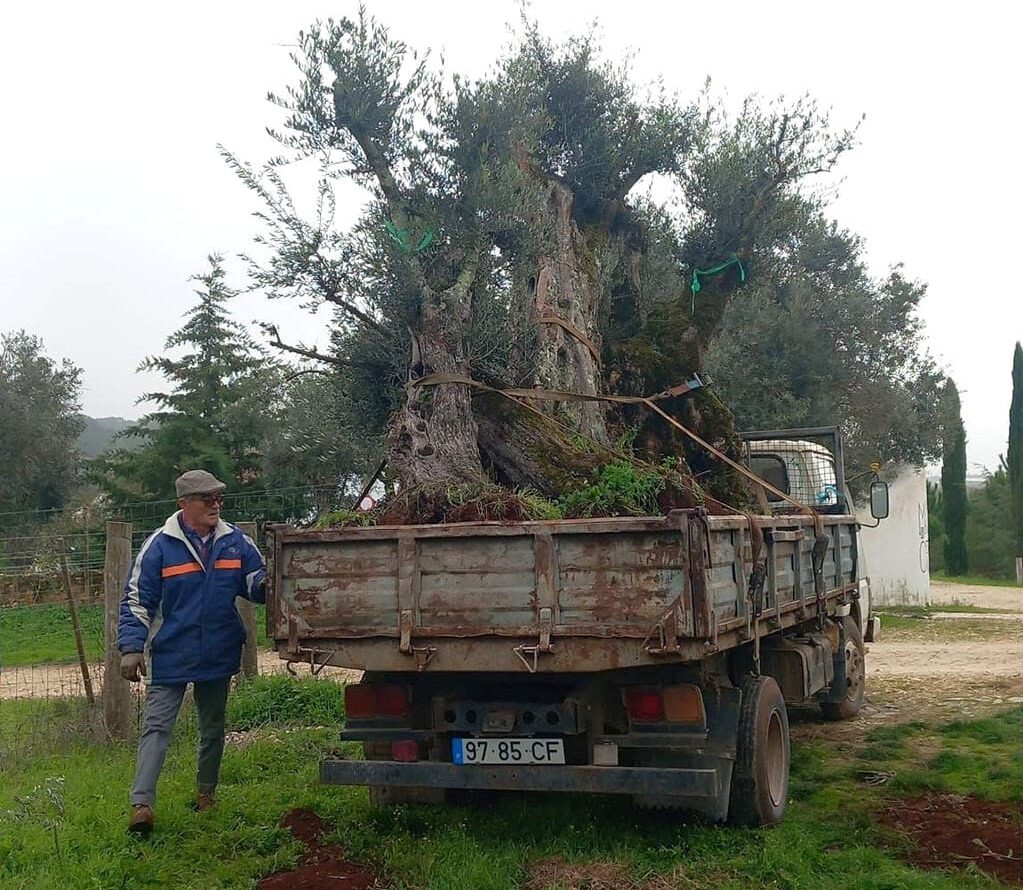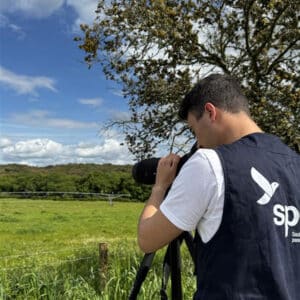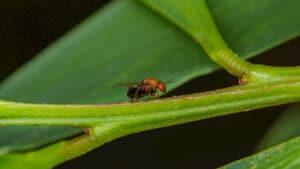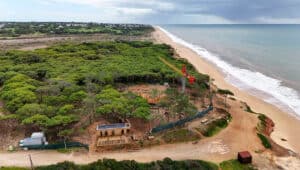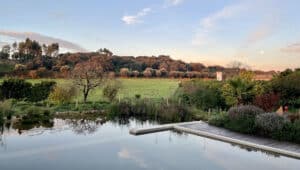There is an olive tree close to us here in interior Alentejo that has been dated and certified with more than 2000 years.
I like to imagine what she’s seen: the Romans, the Moors, the Christian kings and queens. She has watched the cultivation of olive oil, of wine in amphora, and the extraction of marble from the local quarries to build empires here and in distant lands.
I wish I could tell you a story today about cultural respect and reverence for ancient olive trees. The reality is more complex, and often heartbreaking.
Across Alentejo’s rolling landscape, a profound transformation is underway. Ancient olive groves are being systematically replaced by intensive plantations. This isn’t just a shift in farming techniques; it’s an erasing of cultural heritage and a preview of what the future might look like.
The traditional groves that have been an iconic part of this region for centuries feature magnificent trees spaced widely apart. They have deep root systems that can tolerate extreme drought conditions. They generally flourish without chemical interventions and so are organic by default. Outside of harvest season, they require little labor.
In good years, they yield 1-2 tons of olives per hectare – a modest harvest that produces oil with character. Each bottle tells its own story of time, land, and tradition.
In stark contrast, intensive and super-intensive plantations have started to spread across this part of Alentejo. For anyone who has travelled in recent years across the Andalucia region of Spain, let it be a warning of what Alentejo is heading towards. Where there was once natural diversity, today there are only monocultures and intensive plantations as far as the eye can see.

Densely packed rows of dwarf varieties – 1,500 to 2,500 trees per hectare compared to the traditional 50-150 – create uniform green rows that demand constant irrigation, fertilization, and chemical treatments. The process from planting to harvest can be entirely mechanized, and the yields are dramatically higher: 8-12 tons of olives per hectare.
Meanwhile, the human element of this story is changing too. As older generations of farmers retire, families face decisions about their land. Many sell to developers or multinational corporations with no cultural ties to the region. These entities are able to secure licenses from the state and from the EU to farm in ways that deplete local resources. Why is the Portuguese heritage, this cultural richness, so easily sold?
Other contributing factors include labor shortages in a zone where younger generation often leave or are not interested in working the land; an increase in olive oil consumption globally; and EU subsidies that reward higher yields.
While intensive plantations are more efficient and productive, there is undoubtedly a high ecological price tag.
What price will need to be paid for this in the future? And by whom, by which living beings? What will be the damage to the land, the water, and the ecosystem? The damage to our connection to the natural world and to our spiritual well-being?
I probably don’t need to tell you this: ancient olive trees – whole groves, thousands of them – are being cut down. It’s brutal.
In the years since we’ve moved to Alentejo, we’ve adopted as many old olive trees as we could accommodate, recently welcoming another dozen.
Our rescue efforts require work but cost drastically less than buying trees from nurseries, and the beauty and lineage is priceless. Here’s the approach that’s worked for us:
- We’ve spread the word among neighbors, friends, local agricultural shops, and nearby development projects, that we will pay for and provide a home for trees that would otherwise be destroyed.
- When we hear of an old grove being torn out, we visit to assess the trees’ condition, size, age, and health. If they seem ok to transplant, we negotiate a price.
- We work with a local farm equipment company that brings a tractor to dig holes and then goes to the location of the trees to be extracted and transported. We pay for time and equipment by the hour. Our neighbors often join our efforts, also rescuing several dozen in the past few years.
- We spend a day back filling the holes and providing water and nutrition.

It takes time for them to find equilibrium in their new homes, but when they do, they become wise teachers – a living lineage of centuries past, strong in native soil.
In their gnarled branches and silvery leaves and in the fruit they offer up, we find lessons about resilience, adaptation, dignity, solitude and bearing witness to history. We are fighting a losing battle to save the old olive trees – we know that – but it counts for something.
If this is something that interests you, please feel free to contact me at maureencarreira@gmail.com and I will be happy to share more details of how you might rescue trees at risk.

